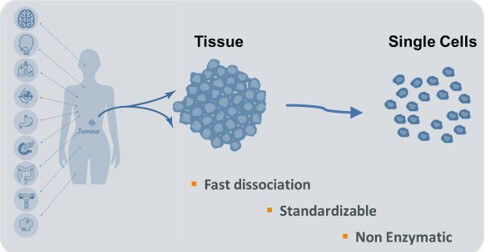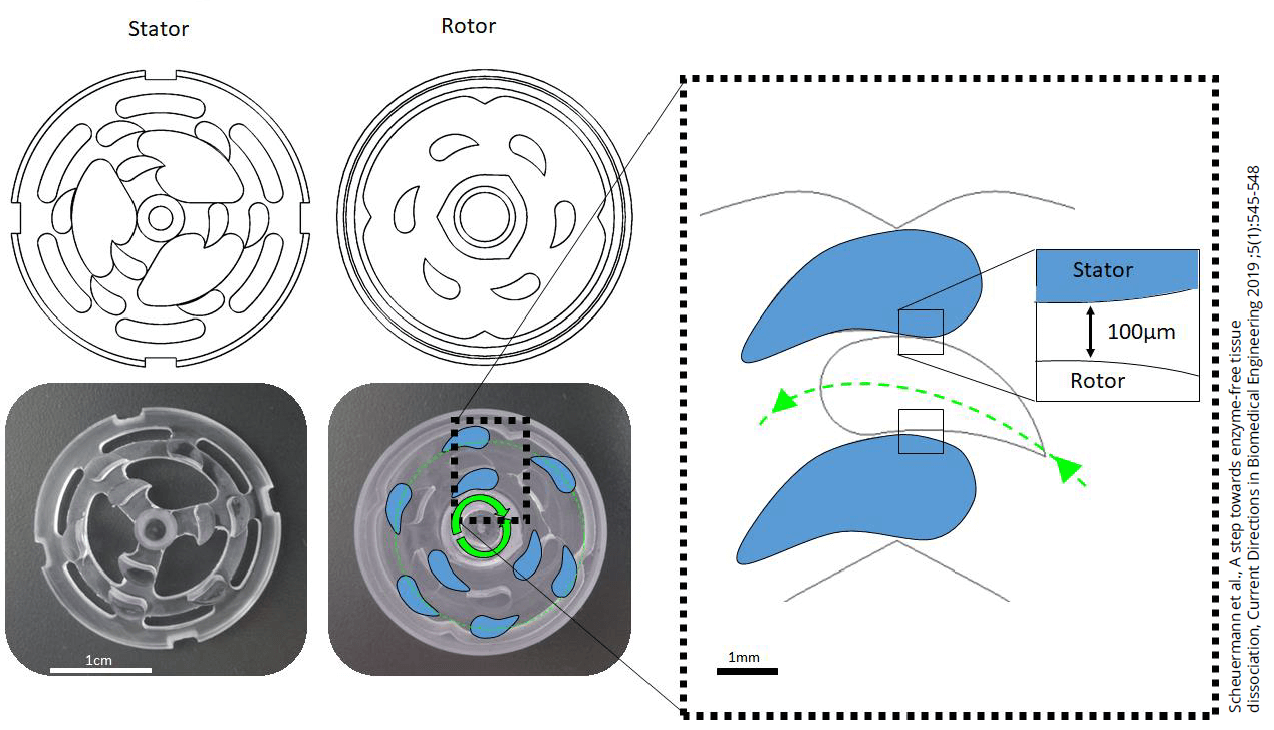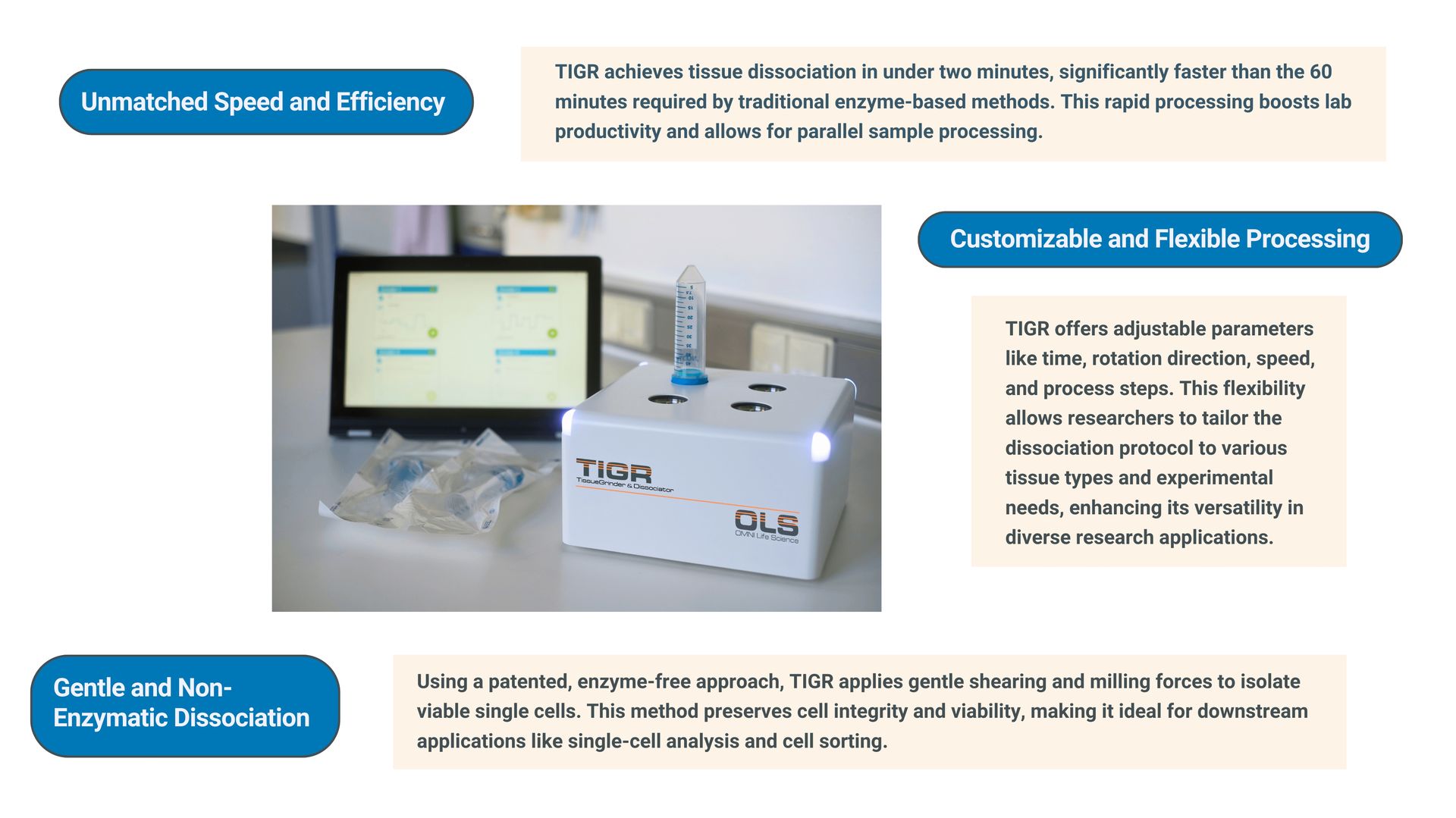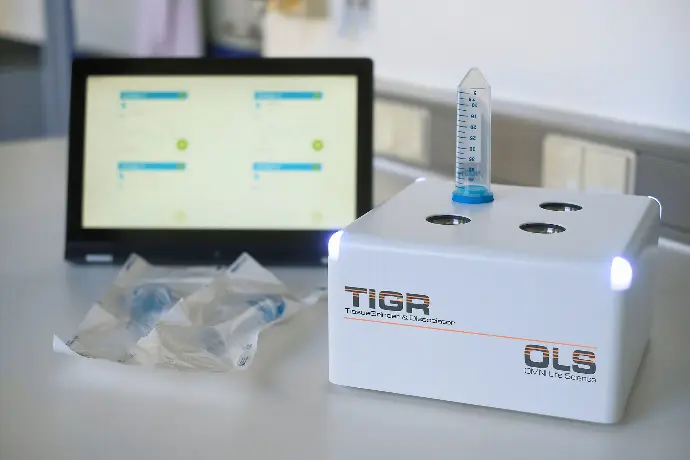"OLS, Your Partner in Cell Research, is proud to present to you:
TIGR Tissue Grinder & Dissociator, the semi-automated, enzyme-free, fast and reproducible approach in order to generate pure and individual single cells from tissue samples."
"What do the scientists say?"
#ols-customer-success-stories






"What are the key features of TIGR Tissue Grinder & Dissociator?"
#dissociation #tissuegrinding #enzymefree

- Enzyme-free, standardized approach enables sophisticated workflows
- 5 to 15x faster dissociation
- Integrated workflow for minimal contamination
- Easy-to-use software and customizable protocols
- Patented technology (EU, US, CN)
- Gentle sample preparation
TIGR is compatible with standard cell culture strainers for mechanically, non-enzymatic and parallel processing of tissue samples in a reduced time.
The TIGR system is composed of a benchtop instrument and the grinding tube with the integrated grinder unit and cell strainer. The two-part grinder unit, consisting of rotor and stator inserts is equipped with counter-rotating grinding teeth.
One of the main advantages of TIGR is its adaptability. The process parameters such as duration, direction of rotation, acceleration, speed and the number of process steps can be adjusted by the researcher using the intuitive software. This allows for the creation of an experiment-specific protocol for any application.
Another major advantage is saving time. The dissociation by TIGR is completed in less than two minutes. This is substantially less when benchmarked against other enzyme-based technologies, methods that can take 60 minutes.
Applications
- 3D Cell Culture Workflow
- Tissue Models – Spheroids, Organoids, Tumoroids
- Single Cell Counting
- Isolation of Primary Cells
- Cancer Cell Line Development
- Flow Cytometry
Established Protocols
| Using default protocol | With protocol optimization |
|---|---|
| Liver | Skin* |
| Lung | FFPE* |
| Heart | Brain |
| Kidney | Urinary bladder |
| Spleen | Thyroid |
| Stomach | Tonsil |
| Colon | Prostate |
| Pancreas | Endometrium |
| Lymph node | Ovary |
| Rectum |
The tissue types found in the left column already have established protocols provided alongside the TIGR Tissue Grinder & Dissociator, as well as a good database from multiple users in cell research. Because of this, any new user can rely on these protocols without needing to make major adjustments, unless for special requirements in the downstream application. The right column shows tissue types that have been proven to be compatible with the TIGR Tissue Grinder, but might need protocol optimization on a case-to-case basis. We are happy to assist in the establishment and testing of new protocols and provide data on these tissue types whereever available. *Skin and FFPE will benefit from the addition of dissociation enzymes during the grinding process.
Many more tissue types are currently in testing steps. If you have tissue not listed in this table, please let us know – we are happy to conduct tests and generate data in cooperation with end users.
Principle

The grinding unit interlocks with rows of teeth that can be moved against each other. The free rotation of the grinding teeth draws the tissue sample into the free space applying adequate amounts of shearing and milling force to gently isolate single cell from the tissue. The space between the grinding teeth and their fin-shaped geometry allows efficient extraction of viable single cells. The stator is the part that does not move, while the rotor is moved bidirectionally, depending on your customizable programming, allowing for user-defined and -controlled dissociation of the cell tissue.
Workflow

The tissue grinding and dissociation with the TIGR follows a simple and standardized workflow. In sterile conditions, the tissue sample is placed between rotor and stator, alongside with some liquid for the cells to be suspended in. Then the cell strainer and the tube are placed over the grinding compartment. From here on out, the tube can be taken out of the sterile space. The tube has to be placed on a TIGR slot with the upside down, so the rotor can connect to the slot’s rotation gear. After using the TIGR software to execute the grinding protocol, the tube can be taken off the instrument and flipped right side up, so that the suspension will pass the cell strainer. The final step to receive a ready-to-use single-cell suspension is centrifugation and resuspension. This quick and easy-to-follow workflow is all it needs to reliably produce a suspension from your tissue sample, no enzymatic dissociation and deactivation necessary – this saves time, effort, money and potential points of error in your workflow.
The Key Advantages of TIGR Tissue Grinder & Dissociator

"What do you analyze?"
#tiger-technology-application


